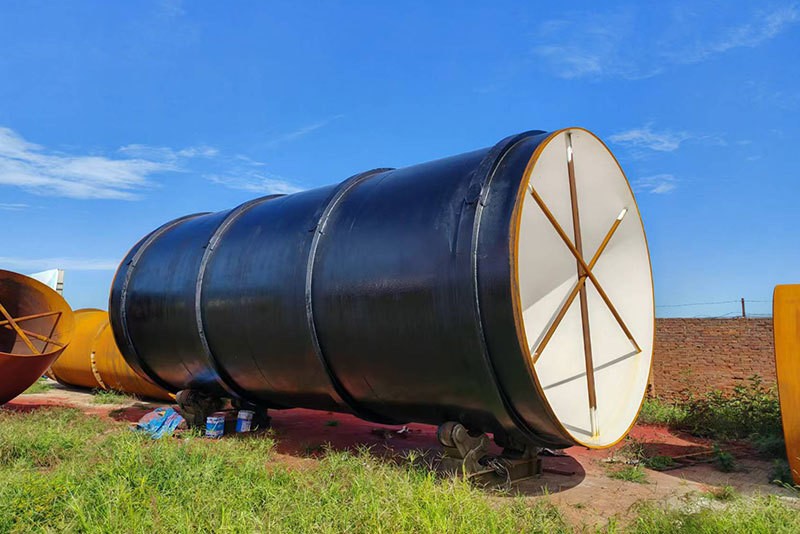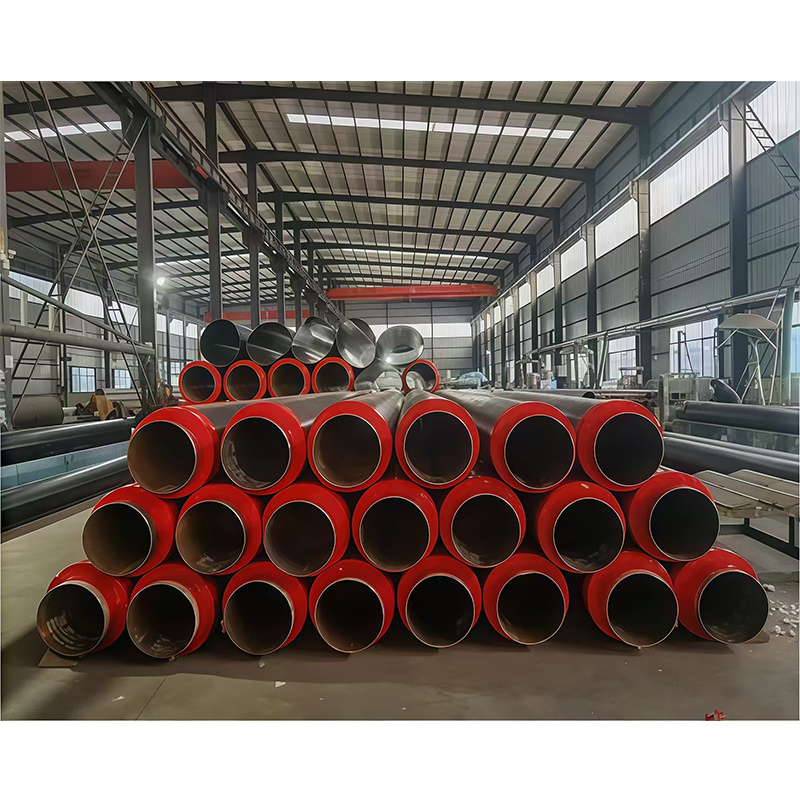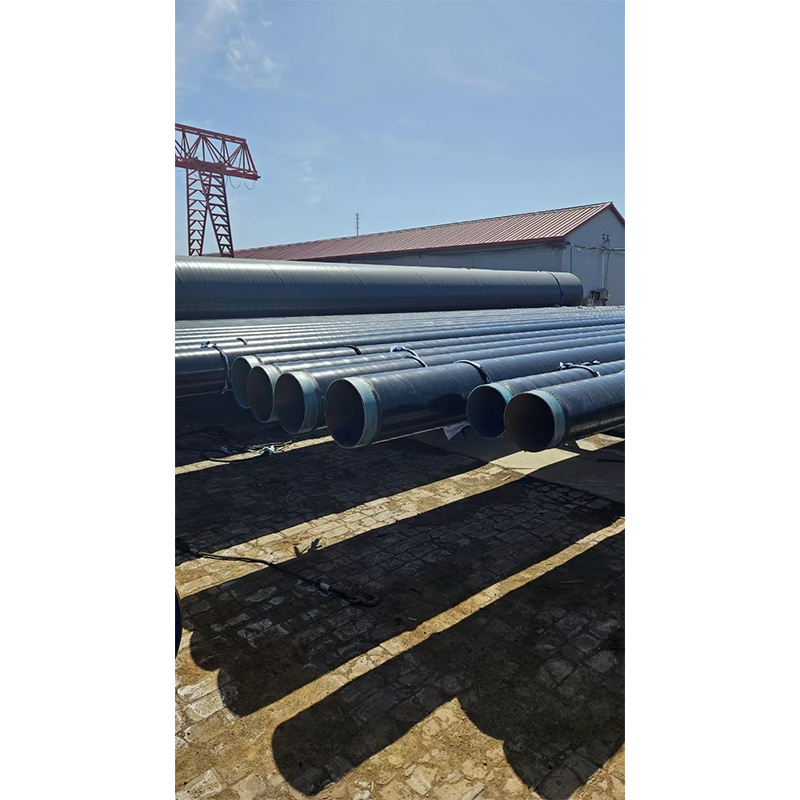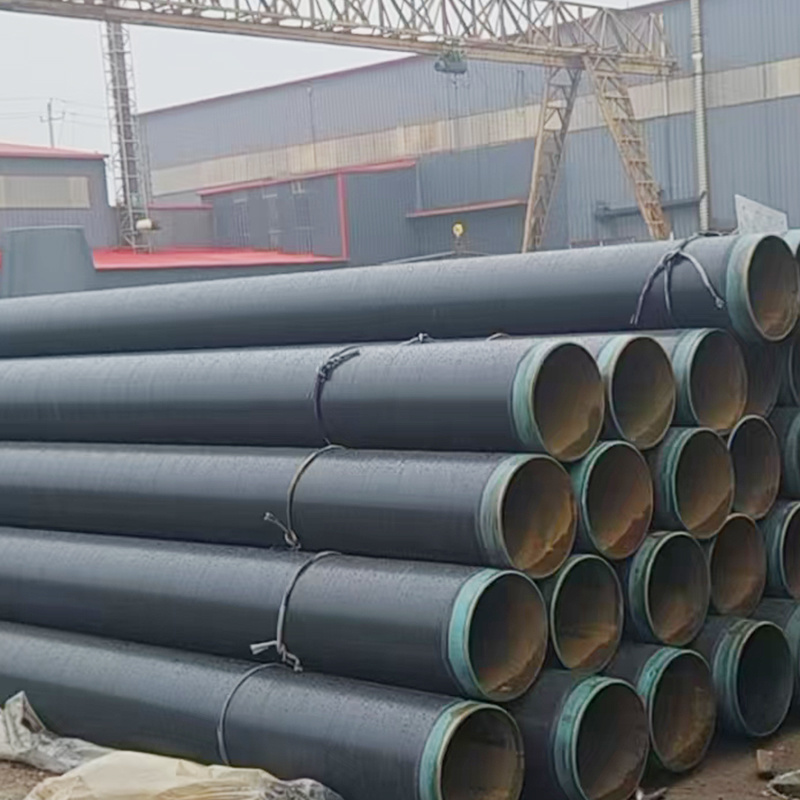Why Insulated Steel Pipes Are Essential for Modern Buildings
May 19,2025
Why Insulated Steel Pipes Are Essential for Modern Buildings
Table of Contents
Introduction to Insulated Steel Pipes
Benefits of Insulated Steel Pipes in Construction
Energy Efficiency: A Key Consideration
Safety Standards and Building Regulations
Applications of Insulated Steel Pipes in Modern Architecture
Installation and Maintenance of Insulated Steel Pipes
Sustaina

Why Insulated Steel Pipes Are Essential for Modern Buildings
Table of Contents
- Introduction to Insulated Steel Pipes
- Benefits of Insulated Steel Pipes in Construction
- Energy Efficiency: A Key Consideration
- Safety Standards and Building Regulations
- Applications of Insulated Steel Pipes in Modern Architecture
- Installation and Maintenance of Insulated Steel Pipes
- Sustainability in Building Design with Insulated Steel Pipes
- Future Trends in Steel Pipe Insulation
- Frequently Asked Questions
- Conclusion
Introduction to Insulated Steel Pipes
Insulated steel pipes have emerged as a vital component in modern construction, especially in the realms of energy efficiency, safety, and sustainability. These pipes are designed to manage heat transfer effectively, which is crucial for both the comfort of building occupants and the overall performance of the structure. By incorporating insulation within steel pipes, builders can significantly enhance the functionality and longevity of plumbing and HVAC systems.
In a world that increasingly prioritizes environmental considerations, insulated steel pipes represent a fusion of durability and efficiency, offering a robust solution for various construction needs.
Benefits of Insulated Steel Pipes in Construction
The benefits of insulated steel pipes are manifold. Here, we outline some of the most significant advantages:
Enhanced Energy Efficiency
Insulated steel pipes are instrumental in reducing energy loss. The insulation minimizes heat transfer, which means that less energy is required to maintain desired temperatures within the building. This energy efficiency not only lowers utility bills but also contributes to a reduced carbon footprint.
Increased Lifespan of Plumbing Systems
By preventing condensation and protecting against extreme temperatures, insulated steel pipes enhance the lifespan of plumbing systems. This durability translates to fewer repairs and replacements, thus saving costs over time.
Improved Safety
Insulation on steel pipes helps maintain safe temperatures, reducing the risk of burns or accidents associated with hot pipes. Additionally, insulated pipes minimize the risk of freezing during colder months, preventing burst pipes and associated water damage.
Energy Efficiency: A Key Consideration
Energy efficiency is a primary concern in modern building design. Insulated steel pipes play a crucial role in achieving energy conservation goals. By reducing heat loss, these pipes enable buildings to operate more efficiently throughout their lifecycle.
Cost Savings Through Energy Efficiency
Lower energy consumption leads to substantial cost savings for building owners and occupants. Insulated steel pipes make it easier to maintain comfortable indoor temperatures without overworking heating and cooling systems. This efficiency results in reduced energy bills and a shorter return on investment for energy-saving technologies.
Safety Standards and Building Regulations
Compliance with safety standards and building regulations is essential for any construction project. Insulated steel pipes can help meet various local and international codes related to fire safety, thermal insulation, and energy efficiency.
Fire Resistance and Safety Compliance
Insulated steel pipes often incorporate fire-resistant materials, which can provide additional safety for buildings in the event of a fire. This characteristic not only adheres to safety regulations but also gives peace of mind to occupants and builders alike.
Applications of Insulated Steel Pipes in Modern Architecture
Insulated steel pipes are versatile and applicable across various sectors of modern architecture.
Residential Buildings
In residential construction, these pipes are used extensively in heating and cooling systems, ensuring that homes remain energy-efficient and comfortable year-round.
Commercial Structures
In commercial buildings, insulated steel pipes are vital in HVAC systems, plumbing, and industrial processes. They help manage water temperatures and maintain optimal conditions for various operations.
Industrial Applications
Industries such as petrochemicals, pharmaceuticals, and food processing rely heavily on insulated steel pipes to transport fluids at controlled temperatures, ensuring product quality and safety.
Installation and Maintenance of Insulated Steel Pipes
Proper installation and maintenance of insulated steel pipes are crucial for maximizing their benefits.
Installation Best Practices
To ensure optimal performance, it's essential to follow best practices during the installation of insulated steel pipes. This includes:
- **Proper Sizing**: Selecting the right size of pipes to match the requirements of the building's systems.
- **Sealing Joints**: Ensuring that joints are properly sealed to prevent air leaks and maximize insulation effectiveness.
- **Regular Inspections**: Conducting regular inspections to identify any signs of wear or damage.
Maintenance Considerations
Routine maintenance is key to extending the lifespan of insulated steel pipes. This includes:
- **Regular Cleaning**: To prevent the buildup of contaminants that can compromise insulation.
- **Monitoring for Damage**: Keeping an eye out for signs of corrosion or physical damage to the pipes.
Sustainability in Building Design with Insulated Steel Pipes
As the construction industry continues to embrace sustainable practices, insulated steel pipes stand out for their eco-friendly attributes.
Recyclability
Steel is a highly recyclable material, making insulated steel pipes an excellent choice for environmentally conscious builders. The ability to reuse steel contributes to sustainability efforts and reduces waste.
Contributing to Green Building Standards
Insulated steel pipes can help buildings achieve certifications such as LEED (Leadership in Energy and Environmental Design). By promoting energy efficiency and sustainability, these pipes are essential for projects aiming for green building certification.
Future Trends in Steel Pipe Insulation
The future of insulated steel pipes is bright, with several emerging trends expected to shape their use in modern construction.
Smart Insulation Technologies
Advancements in smart insulation technologies may soon allow for more adaptive and responsive systems that can optimize energy use in real-time.
Innovations in Materials
Ongoing research into new materials and insulation methods promises to enhance the efficiency and effectiveness of insulated steel pipes.
Frequently Asked Questions
1. What are insulated steel pipes made of?
Insulated steel pipes typically consist of a steel core covered with insulation materials such as mineral wool, polyurethane, or polystyrene.
2. How do insulated steel pipes improve energy efficiency?
By minimizing heat transfer, insulated steel pipes help maintain desired temperatures, leading to reduced energy consumption in heating and cooling systems.
3. Are insulated steel pipes suitable for outdoor use?
Yes, insulated steel pipes are designed to withstand various environmental conditions, making them suitable for both indoor and outdoor applications.
4. What maintenance is required for insulated steel pipes?
Regular inspections for wear, cleaning, and monitoring for corrosion are essential for maintaining insulated steel pipes.
5. How do insulated steel pipes contribute to sustainability?
Insulated steel pipes promote energy efficiency and are recyclable, aligning with sustainability goals in modern construction.
Conclusion
Insulated steel pipes are undeniably essential for modern buildings, providing significant benefits in energy efficiency, safety, and sustainability. As the construction industry continues to evolve, the role of these pipes will only become more critical in ensuring that buildings are not only functional but also environmentally responsible. By investing in insulated steel pipes, builders and property owners can achieve long-term cost savings while contributing to a greener planet.
TAG:
Related Posts
Exploring the Benefits of 3PE Pipeline Solutions in Oil and Gas
Exploring the Benefits of 3PE Pipeline Solutions in Oil and Gas
Table of Contents
1. Introduction to 3PE Pipeline Solutions
2. Understanding the Composition of 3PE Coating
3. The Importance of Corrosion Resistance in Oil and Gas
4. Cost-Effectiveness of 3PE Pipelines
5. Enhanced Durability and Longevity
6. Environmental Benefits of 3PE Pipeline Solutions
7. Installation and Mainten










